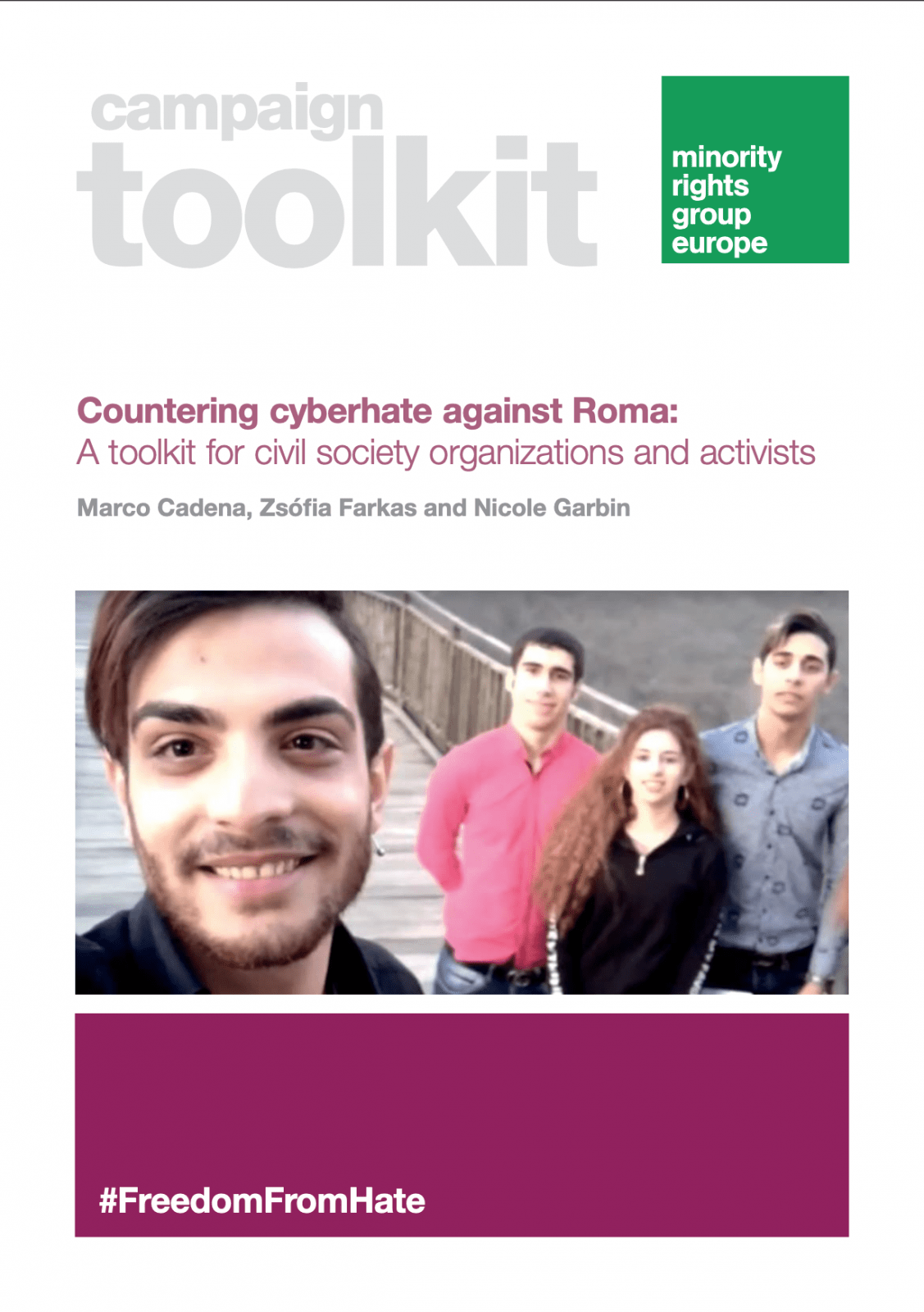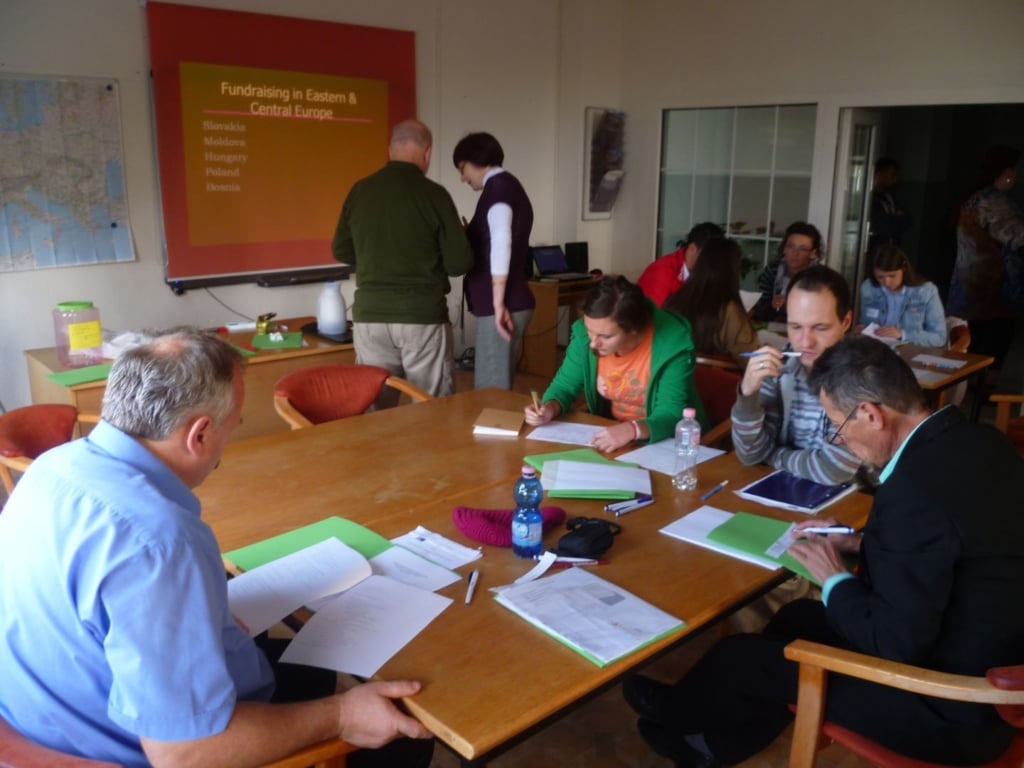Romania
-
Main languages: Romanian, Hungarian, German, Romani, Ukrainian/Ruthene, Lipovan (Russian).
Main religions: according to the 2011 Census, the large majority of the more than 20 million Romanians belong to the Eastern Orthodox Christianity (16.3 million), with a significant minority of Roman Catholics (870,774) and different forms of Protestantism (Lutheran, Calvinist, Unitarian and other groups), Greek Catholicism (Uniate).
According to the 2011 Census, minority groups include 1,227,623 Hungarians (6.1 per cent), 621,573 Roma (3.1 per cent) (though other estimates are significantly higher, such as the Council of Europe’s figure of 1.85 million), 50,920 Ukrainians/Ruthenians (0.3 per cent) and 36,042 Germans (0.2 per cent). The number of Germans has been falling considerably for the last 20 years, from 119,436 Germans in 1992 and 59,764 in 2002, due to emigration to Germany.
Hungarians are officially the most numerous minority in Romania (although likely outnumbered by Roma) and are overwhelmingly settled in Transylvania. The most compact area of Hungarian population is eastern Transylvania, which has historically been the home of Szeklers. Szeklers, who entered Transylvania at the end of the first millennium, hold a special (and recent) place in Hungarian mythology. While most Szeklers describe themselves on official documents as Hungarians, there have been recent calls from Szekler organizations for autonomy – a request so far refused by Romanian authorities. An additional subgroup within the Hungarian ethnic community are Csangos of Moldavia (see below), who live in scattered rural communities near the Transylvanian border. Hungarians are either Roman Catholics, Calvinists or Unitarians and are thus confessionally different from ethnic Romanians, most of whom are Eastern Orthodox or Greek Catholic (Uniate).
The majority of Germans also live in Transylvania, where they comprise three separate groups: ‘Saxons’ who are the descendants of Germans who entered Transylvania in the twelfth and thirteenth centuries; ‘Swabians’ who are descended from southern Germans who settled mainly in the Banat in south-west Transylvania during the eighteenth century; and the small group of ‘Landler’ who are descended from Protestants who took refuge in northern Transylvania in the eighteenth century.
The Roma, who are believed to be the largest minority, are found throughout the territory of Romania. The majority of Ukrainians/Ruthenians live in northern Transylvania in Maramures county. Until 2000 the Ruthenians were officially seen as belonging to the Ukrainian national minority but following parliamentary elections that year the Ruthenians were recognized as a separate national minority (as were the Macedonians who had similarly been previously unrecognized officially).
Smaller minorities
The 2011 Census also recorded 23,487 Russians/Lipovans; 27,698 Turks; 20,282 Tatars; 18,076 Serbs; 13,654 Slovaks; 7,336 Bulgarians; 5,408 Croats; 3,668 Greeks; 3,271 Jews; 2,447 Czechs; 2,543 Poles; 3,203 Italians; 2,017 Chinese; 1,361 Armenians; and 1,264 Macedonians. In addition, the Census recorded 1,536 Csangos and 18,524 ‘others’. Furthermore, for some 1,236,810 responses no information on ethnic identity was available.
Serbs, Croats, Poles, Czechs and some Slovaks, Roman Catholic Bulgarians and Ukrainians live mainly in the Banat near the border with Serbia although many Serbs were forcibly resettled after 1948 in Wallachia. Another part of the Slovak community lives by the Hungarian border, whilst the Eastern Orthodox Bulgarians live in Dambovita county in Southern Romania. Ukrainians also live in Maramures and South-Bukovina in the North and in the Danube estuary in the South. Poles mainly live in the North of Moldova around the city of Suceava. Turks and Tatars live mainly in the Dobrudja near the Danube estuary. The few Italians live mostly in the North of Moldova around the city of Iasi. Albanians and Armenians are mainly concentrated in the capital, Bucharest, but some Armenians live in Transylvania too.
The number of Jews has fallen considerably over the past 70 years as a result of the Nazi genocide and of state-sponsored emigration to Israel during the communist period.
Csangos live in eastern Romania, traditionally speaking a form of early Hungarian. They are predominantly Roman Catholic. The community is split between those who differentiate themselves from the Eastern Orthodox majority (Romanian) population where they live solely by religion, and those who see themselves as belonging to a separate ethnic group, with the authorities apparently favouring the former. However, in practice members of the community have been able, if they so wish, to study Hungarian in public schools, and those choosing to do so have been on the rise.
In April 2005 an association of Aromanians officially requested the authorities to recognize them as a national minority, without success. Aromanian is variously seen as a dialect of Romanian or a distinct language. Similarly, the community is split between those who see themselves as a sub-group of the Romanian people, and those who see themselves as a separate ethnic group. The authorities view them as ethnic Romanians and in the 2011 Census the National Institute for Statistics included those who declared themselves to be Aromanians in the figure for ethnic Romanians.
-
Governance
In December 1991, following Communist leader Nicolae Ceauşescu’s overthrow Romanians approved a new Constitution by referendum. The Constitution defines Romania as ‘a nation state, sovereign, unitary and indivisible’. It guarantees minorities the right ‘to the preservation, development and expression’ of identity, including education in the mother tongue, and affirms the equality of rights and freedom from discrimination. The Constitution additionally provides for deputies appointed by national minorities to be represented in the parliament.
Voters approved a package of amendments to Romania’s Constitution in 2003 that included new legal guarantees for minority rights. Among the provisions, national minorities gained the right to engage government administrators and courts in their native languages. However, some local officials have been slow and grudging in accepting use of minority languages in their dealings with the public.
Minorities are represented at national and local levels. Groups too small to meet the thresholds for broad popular support required to form a political party can opt to build minority organizations that can also field candidates for election. However, Romanian law also sets threshold requirements for their registration, and human rights organizations have criticized these as too stringent. Roma are under-represented at national and regional levels, but recent special provisions have boosted Roma representation at the local level.
Mother-tongue education for minorities is widely available at the primary and secondary school levels, especially for Hungarians. Where minority groups are highly concentrated, it is often also available at university. The government of Hungary established a private Hungarian-language university in 2001 that operates in Transylvania.
Print and broadcast media is likewise available in many minority languages, especially Hungarian and German. In regions where such other groups as Ukrainians, Armenians, Turks and Slovaks are concentrated, local broadcasts in their first languages are often available.
History
Romanians claim descent from the indigenous population of the Carpathian region who were Romanized during the classical period. In the thirteenth century, independent Romanian principalities were founded in Wallachia and Moldavia that followed the Eastern Orthodox rite. These subsequently became vassal states of the Ottoman Empire. During the nineteenth century, Wallachia and Moldavia united to form a common Romanian state that gained recognition as a sovereign principality (later kingdom) in 1878. Transylvania was part of the Kingdom of Hungary from the 11th century, and in 1571 became an autonomous principality under Ottoman suzerainty. In 1711 it became part of the Habsburg Monarchy (Austria-Hungary after 1867) and was joined to Romania after World War I. Bessarabia, formerly a part of Russia, was awarded to Romania after 1918 but was taken by the Soviet Union in 1940. Since 1991 Bessarabia has been a part of the sovereign state of Moldova.
With the acquisition of Transylvania in 1918, Romania inherited an ethnically diverse territory, containing substantial Hungarian, German and other minorities. Hungarians have historically been the dominant social group in Transylvania. Although at the time of Transylvania’s incorporation into Romania in 1918, self-government was promised for the region’s minorities, no such concession was forthcoming. During the interwar period, the Romanian government neglected minorities. During World War II the Axis powers awarded much of Transylvania to Hungary, but Romanian control was re-established after the war. During the war, Jews and Roma were systematically murdered.
The number of Germans has been in steady decline since the interwar period when they were recorded as 761,000-strong (1930 Census). At the end of World War II, the new authorities seized German properties and transported 75,000 Germans to the Soviet Union as forced labour. The Communists permitted many more to emigrate to the Federal Republic of Germany in exchange for hard currency remittances.
Communist rule in Romania was among the harshest in Central and Eastern Europe and resulted in widespread repression of the whole population, although the regime did make concessions to the country’s diversity. In the 1950s, the Communists provided an extensive network of minority-language schools, publications and cultural organizations. Between 1952 and 1968, a Hungarian Autonomous Province functioned in the most compacted area of Hungarian settlement in Transylvania, but its powers of self-rule were only nominal. After 1968, Communist policy moved by degrees towards assimilation. The government merged and reduced minority-language schools into ‘sections’ within Romanian schools. The authorities also reduced the number of subjects which might be taught in minority languages and banned cultural organizations. Nevertheless, even in the late 1980s, Romanian television and radio continued daily transmissions in Hungarian and German.
The Communist regime of Nicolae Ceauşescu was overthrown in 1989 and a democratic state proclaimed. Since then, conditions for minorities gradually improved despite some initial violent inter-ethnic incidents. After the revolution of 1989, Hungarians rapidly asserted their rights and aroused Romanian animosities and in March 1990, inter-ethnic fighting in the Transylvanian city of Targu-Mures left at least six people dead.
From then, however, relations between Romanians and Hungarians in Transylvania have been peaceful. Extremist statements and provocations from right-wing Romanian parties, including the threatened demolition of Hungarian cultural monuments and the publication of racist literature and speeches, have not escalated into violent conflict. However, tensions have persisted for several reasons. Among these are the continued denial of Hungarian demands for territorial autonomy in the two counties where Szekler Hungarians live in great majority in the centre of Romania. The refusal to reinstate the Bolyai University, a Hungarian language public university that was merged with the Romanian Babes University in 1959, added to this tension.
Around 30 organized attacks on Roma settlements by other groups were reported in the period between December 1989 and 1994 including an attack on Roma in the capital Bucharest by striking miners in March 1990. After 1989, more than 100,000 Germans migrated to Germany, with the consequence that a large number of Saxon and Swabian villages became deserted.
In May 1990 the government issued a regulation expanding minority-language education. With considerable financial support from foreign foundations and neighbouring states of national minorities, minority cultural facilities and publications operated freely, and minority-language television and radio broadcasts were extended. In 1993, the government set up a Council for National Minorities to monitor and advise on minority affairs. Increasingly, Romania viewed itself as a candidate for European Union (EU) membership, giving added impetus to minority rights reforms.
In 1991 and again in 1999, Romanian legislators caused an international furore when they observed a minute of silence to commemorate the execution for war crimes of Romania’s Nazi-allied leader, Marshal Ion Antonescu. This was particularly distressing to Romania’s small remaining Jewish population, which remains vulnerable to anti-Semitic incidents. A 2002 government decree prohibited racist, xenophobic and fascist organizations, and banned denial of the Holocaust, including denial of the participation of Romanian officials in its conduct. By 2004, Romanian President Ion Iliescu openly acknowledged in a speech before parliament the full participation of Romania’s regime in perpetrating the Holocaust.
Since Romania’s accession the EU in 2007, minority rights protections have been strengthened through a range of measures. Another consequence is that emigration to other countries has increased rapidly, with some 3.4 million Romanians emigrating between 2007 and 2015 – the second highest emigration rate after Syria. This includes a significant number of Roma who have relocated to France, Italy and other countries to escape poverty and persecution at home, though in many cases they have faced further challenges in the form of evictions, police harassment and racial discrimination.
-
Historically, Romania has been relatively homogenous, and the ethnic Romanian majority currently makes up approximately 83.5 per cent of the national population. Minorities in Romania, particularly Roma, have experienced high levels of inequality, social exclusion and prejudice. These forms of discrimination have intensified further in recent years. According to the 2016 report of the UN Special Rapporteur on extreme poverty and human rights, many state officials are in denial about the extent of poverty and social exclusion affecting Roma in the country.
Indeed, across most indicators, Roma experience disproportionate levels of deprivation, with 2014 research by the European Commission finding that 84 per cent of Roma lacked access to clean water, sewage and electricity. In order to successfully tackle these issues, the government needs to also address ways to empower marginalized communities by introducing various education programmes that include the Roma communities. Lack of access to adequate education is a particular priority, with just 5 per cent of Roma currently continuing their studies beyond secondary education, a situation that in turn leads to limited representation in formal, secure employment.
Despite the need for greater efforts to support their inclusion, widespread prejudice against Roma serves as a major barrier that contributes to their continued segregation. For example, research in 2013 by the National Council for Combatting Discrimination found that 48 per cent of respondents did not want a Roma work colleague, whilst 41 per cent would not want a Romani neighbour and 38 per cent would not want any Roma individuals in their municipality. These findings illustrate the prevalence of negative and discriminatory attitudes towards Romania’s Roma communities. While there have been some positive developments, such as the adoption of the European Commission’s Roma Inclusion Strategy for 2015-2020, significant gaps persist. The Advisory Committee of the Council of Europe’s Framework Convention for the Protection of National Minorities has noted that the Strategy does not identify funding sources and lacks mechanisms for monitoring at the local level.
According to official data – though this may overlook the true size of the Roma community – Hungarians make up the largest ethnic minority in Romania and have engaged in a struggle for equal recognition of their language rights. An important milestone was the ruling of a Romanian court in 2017 to enforce bilingual road signs in the city of Cluj-Napoca/ Kolozsvár in Transylvania, where a significant Hungarian minority is present.
In 2011, the national Census estimated that there were only 3,271 Jews still living in Romania, down from 5,785 Jews in the 2002 Census and 8,955 in 1992. Their small demographic perhaps explains why the Jewish community is not as frequently targeted by racist groups, though anti-Semitic incidents do still take place. For example, in April 2017, some graves in a Jewish cemetery in Bucharest were vandalised on Holocaust Remembrance Day, with a similar incident taking place in October 2017 near the city of Reghin. According to a Pew Global Attitudes survey conducted in Central and Eastern Europe in 2018, Romania has one of the highest percentages among respondents stating that they would not accept Jews as fellow citizens of the country – 22 per cent. Only Armenia and Lithuania had higher such response rates, whereas Romania’s neighbour Ukraine recorded the greatest acceptance rate – only 5 per cent answered negatively.
-
General
- APADOR-CH (Association for the Defence of Human Rights in Romania – the Helsinki Committee)
- Aromanian Community from Romania (Youth Department)
- Liga Pro Europa
- Romanian Institute for Human Rights
- Russian Lipovans Community in Romania
Roma
- Aven Amentza (Roma Centre for Public Policies)
- Romani CRISS (Centre for Social Intervention and Studies)
Updated May 2020
Related content
Latest
View all-

8 April 2019
A Partnership for All – International Romani Day 2019
International Roma Day is a day to celebrate Romani culture. But for MRG and Chirikli ‘Roma Women’s Fund’, we celebrate Roma…
-

24 March 2017
MRG welcomes decision of Romanian court ordering installation of bilingual place signs in capital of Transylvania, urges authorities to abide by ruling without further delay
A Court decision which compels the local authorities to install bilingual place names in the city of Cluj-Napoca/Kolozsvár is a major step…
-

29 July 2014
Is integration “impossible” for Roma in France?
As the 17-year-old Roma youth known only as Darius recovers from a vicious gang assault that shined a spotlight on France’s forced…
Reports and briefings
-
1 April 1990
Romania’s Ethnic Hungarians
In December 1989, László Tokes, an ethnic Hungarian non-Conformist pastor in the Romanian city of Timişoara, defied the dread Securitate…
Guides and toolkits
-
3 February 2020
Campaign Toolkit – Countering cyberhate against Roma
With far-right groups becoming increasingly prominent and xenophobic discourse on the rise, in recent years there has been a resurgence of…
Programmes
-
- Central and Eastern Europe
- Human Rights
Don’t miss out
- Updates to this country profile
- New publications and resources
Receive updates about this country or territory
-
Our strategy
We work with ethnic, religious and linguistic minorities, and indigenous peoples to secure their rights and promote understanding between communities.
-
-



